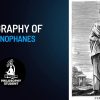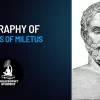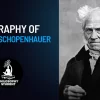Born on August 4, 1834 in Kingston upon Hull, Yorkshire, John Venn was a British mathematician, logician, and philosopher. He is most widely remembered for developing the Venn diagram, which is a simple way of showing all possible logical relations between a finite collection of sets. Venn diagrams have been used in math and logic education as well as in the development of set theory, probability, logic, and computer science.
Beyond the Venn diagram, John Venn wrote a major book on probability, The Logic of Chance (1866), which put forth a frequency theory of probability, proposing that probability should be determined by how often a certain thing is forecast to occur rather than left to various attempts at guesswork, no matter how “educated.” The very idea that “chance” admits of “logic” has profound epistemological implications.
In 1881, Venn published Symbolic Logic, an advance in this field that built on the theories of George Boole. It was in the context of this work that Venn introduced the diagraming tool that would come to be named for him.
John Venn’s father, Rev. Henry Venn, was rector of the parish of Drypool in Yorkshire, and his son was the descendent of generations of evangelicals. This—and the death of his mother when he was only three made for a stern upbringing. In September 1864, he was sent to London with his brother Henry to attend Sir Roger Cholmeley’s School (today known as the Highgate School). He subsequently transferred to Islington proprietary school before entering Gonville and Caius College, Cambridge, in October 1853.
Venn received a degree in mathematics in 1857 and became a fellow. In 1859, following family tradition, he took orders as an Anglican priest and served at the church in Cheshunt, Hertfordshire, and then in Mortlake, Surrey. In 1862, however, he returned to Cambridge as a lecturer in moral science while also studying and teaching logic and probability theory. In 1869, he began giving intercollegiate lectures, and it was sometime during this activity that he developed the diagramming method later named for him.
In 1883, Venn resigned from the clergy because, he declared, Anglicanism was incompatible with his philosophical beliefs. Shortly after this, he was awarded a Sc.D. by Cambridge and elected a Fellow of the Royal Society. Venn’s thriving academic career was crowned by his election to the presidency of Gonville and Caius College in 1903. He held that post until his death on April 4, 1923.




































